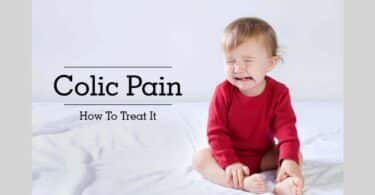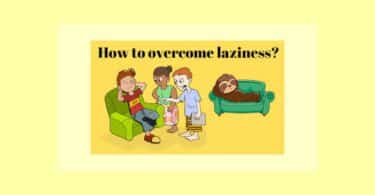Abstract
This is a homeopathic examination of the Beast in the 2017 Disney film “Beauty and the Beast”. It includes a description of Beast and his state, remedy choice and justification and rubrics used. I discuss what might have happened differently in Beast’s life if he had been treated homeopathically, as well as possible obstacles to cure.
Keywords: Beast, homeopathy, remedy
Examining a person from history, film, politics, literature or the arts can be very interesting from a homeopathic perspective. Such a study provides a deeper understanding of the personality and characteristics of a person, as well as his mental / emotional state, and practice of such will improve competency in assessing clients and selecting remedies. Important considerations include: a description of the person and his state, choice and justification of remedy, a summary of fitting rubrics, and potential obstacles to cure. Theorizing how someone’s life might have been different if treated homeopathically provides insight as to how remedies have the potential to elicit cure. An interesting character to study is the Beast, from Disney’s 2017 film “Beauty and the Beast”.
The Beast – Background
A Prince, living in a luxurious castle, is a sweet boy who loves his mom. After she dies from illness he is raised by his father who turns him into a “beast” (Condon, 2017). He grows up to be as vain, self-centered and arrogant as his father, and he taxes the villagers of his kingdom harshly. During a debutante ball at his castle a beggar woman appears and offers a single rose as payment for shelter from a coming storm. The Prince turns her away twice. The beggar reveals herself to be an enchantress, turns the Prince into a beast and the servants into enchanted objects, and erases the memory of the castle from the villagers. To break the spell, the Beast must learn to love another and earn her love in return before the last petal falls from an Enchanted Rose. Otherwise, he is doomed to remain a beast and his servants’ antiques. Belle is a beautiful and intelligent young woman who lives with her father, Maurice, in the village. When Beast imprisons her father, Belle offers to exchange places in return for her father’s release. Beast accepts Belle’s offer. As the story progresses, Beast falls in love with Belle but is afraid to tell her. He instead releases her to rejoin her ailing father in the village. Once home, Belle unknowingly betrays Beast to a frenzied mob that storms the castle to destroy him. At the castle, the enchanted servants repel the mob, but the Beast is stabbed in the back. The Beast, dying from his wounds, tells the weeping Belle that he is happy that he is able to see her one last time. Belle tells him that she loves him just as the last petal on the Enchanted Rose falls. The spell is broken and the Beast transforms into the Prince. The Prince and Belle host a ball for all the villagers, and everyone lives happily ever after (Wikipedia, 2017).
The Beast – Description and State
According to director Bill Condon, the Prince was a sweet boy who loved his mom. He lost her as a young boy, and was raised by his father who turned him into a “beast” (Condon, 2017). Disney’s film “Beauty and the Beast” picks up Beast’s story at age 21 (Truong, 2017). At the beginning of the movie Beast appears very one-dimensional. He is egotistical, haughty and selfish. Symptoms taken directly from movie dialogue and action include (Condon, 2017):
- Vain
- Selfish
- Taxes people to fund elaborate parties
- Egotistical / arrogant / haughty (calls other idiots)
- Repulsed by ugliness
- Rejects gifts from his lessors
- Disdainful
- Loud / Gruff
- Vengeful (locks up Maurice for life because he picks rose)
- Showy (wants Belle to have finest room in castle)
- Impatient
- Demanding (“You’ll join me for dinner”)
- Gluttony (great appetite, messy eating)
- Adverse to bathing
- Slovenly (West Wing is a pigsty, clothing is dirty)
- Loud
- Mean, coarse, unrefined
As the movie progresses the audience gets a glimpse of the side of the Beast which he might be subconsciously covering up, through symptoms, dialogue and actions (Condon, 2017):
- Meek, so unsure
- Worried about rose losing petals
- Prince, waiting to break free
- Sad eyes
- Intelligent, knows Shakespeare, has extensive library
- Generous – gives Belle best room in castle and access to library
Finally, some notable physical characteristics are:
- Stooped-shoulder (hunchbacked appearance)
- Thick, bushy eyebrows
- Nails thickened and distorted
- Elongated teeth
- Dirty, greasy fur
- Offensive odor (this is an assumption, not a clinical observation)
Remedy Selection
In reviewing the case of Beast post factum, it is interesting to note that remedy considerations differ depending upon stage of life. The following analysis pertains to a remedy choice for the period of life immediately prior to the Prince’s spell transformation up to Beast’s realization of love for Belle. As in all Disney movies, after Beast falls in love, nearly dies, rescues and is rescued, and is ultimately saved by true love, his character transforms both literally and figuratively, without any remedy catalyst.
During initial analysis, repertorization of symptoms using J.T. Kent’s “Repertory of the Homoeopathic Materia Medica” was performed. Review of results indicated a collection of potential remedies. Potential remedies were researched in “Desktop Guide to Keynotes and Confirmatory Symptoms” by Roger Morrison, M.D., “The Soul of Remedies” by Roger Sankaran and “Lectures on Homoeopathic Materia Medica” by J.T. Kent. After research, it seems prudent to conclude that homeopathic Sulphur would be a well-chosen remedy for Beast.
Justification of Remedy
Morrison notes that there are two main personality types for those needing Sulphur (Morrison, 1993). The philosophical type has great intellectual interest. Beast demonstrates such intelligence in his study of Shakespeare and his extensive library. The practical idealist type needs approval from others and can be generous, as demonstrated by Beast when he gives Belle the best room in the castle and access to his library. Sankaran notes that “patients feel that they are expected to be good in their relationships with people, and so they are caring and do a lot for others.” (Sankaran, 2011).
According to Morrison, there are many other Mental signs pointing to Sulphur. Morrison describes mental symptoms as including egotism, laziness, criticism, and disgust for aged people. Kent further states that “selfishness runs through the Sulphur patient. There is absence of gratitude” (Kent, Lectures on Homoeopathic Materia Medica, 2009). Beast shows all those characteristics. It is in fact his egotism, disgust for the enchantress and absence of gratitude for her gift of a rose which lead to his predicament of “beastliness”. Slovenly, dirty, messy, indifference to appearance and adverse to bathing are also noted as Sulphur indications by Morrison. The Beast demonstrates those symptoms in his dirty clothes, unwashed, uncombed fur, and thick, unkempt finger and toenails. It should also be noted that Beast’s West Wing was a veritable pigsty. Morrison Mentals also note anxiety about health, which is demonstrated by the intense concern Beast feels as he watches the wilting rose – an indication that he may never regain the health he desires as a robust Prince. (Morrison, 1993).
Physically, Beast also confirms Sulphur symptoms noted in Morrison (Morrison, 1993). He has a weak, hunched back, thick and bushy eyebrows, thickened and distorted nails, elongated teeth, dirty, greasy fur, and an offensive odor (although this is an assumption, not a clinical observation.)
Given the above analysis, the remedy Sulphur seems prudent for Beast at the indicated point in his life. In fact, the lyrics of the song “Something There”, practically paint the remedy picture of Sulphur denoted by Kent, Morrison and Sankaran, as Belle sings “There’s something sweet and almost kind. But he was mean and he was coarse and unrefined. But now he’s dear, and so unsure. I wonder why I didn’t see it there before” (Ashman, 2017).
Potential Result of Remedy Action
Given Beast’s mental and emotional state, it might be impossible to convince him to take a homeopathic remedy. However, this potential obstacle to cure is easily overcome. Mrs. Potts, his cook, would have had access to all of his food and drink and could surreptitiously add his remedy. Beast’s life might have been different if treated homeopathically. If treated before the beggar woman requested shelter in exchange for a rose, the Prince may have been less egotistical, critical and disgusted by the aged. He might have shown generosity by providing shelter and gratitude by accepting the rose. He would not have been transformed into a beast, and maybe even rewarded with more luxuries and riches than he already possessed. If he were treated with Sulphur after transformation as illustrated in the body of this study, he might not have been so harsh to Maurice and Belle, leading to their imprisonment and resulting castle storming, fall, and deathbed declaration of love between Belle and Beast. This however, begs the question – would the Prince and Belle now be living happily ever after?
Conclusion
Examining a person from history, film, politics, literature or the arts can be very entertaining, as well as informative. Such a study provides a deeper understanding of the personality and characteristics of a person, as well as his mental / emotional state. Practice of such will improve competency in assessing clients and appropriate remedy selection. Studying Beast, from Disney’s 2017 film “Beauty and the Beast” illustrates how important it is to consider all aspects of a remedy picture, as well as timing of remedy prescription, to help guide the most efficacious potential result. Theorizing how Beast’s life might have been different if treated homeopathically provides insight as to how remedies have the potential to elicit cure.
Bibliography
Ashman, H. (2017). “Something There”. Retrieved from http://disney.wikia.com/wiki/: http://disney.wikia.com/wiki/Something_There
Condon, B. (Director). (2017). Beauty and the Beast [Motion Picture].
Kent, J. T. (2007). Repertory of the Homoeopathic Materia Medica. New Delhi: B. Jain.
Kent, J. T. (2009). Lectures on Homoeopathic Materia Medica. New Delhi: B. Jain.
Morrison, R. M. (1993). Desktop Guide to Keynotes and Confirmatory Symptoms. Grass Valley, CA: Hahnmann Clinic Publishing.
Sankaran, R. (2011). The Soul of Remedies. Mumbai: Homoeopathic Medical Publishers.
Truong, P. (2017, February 21). 10 Problems Beauty and the Beast Must Address in Disney’s Live-Action Movie. Retrieved from http://www.cosmopolitan.com: http://www.cosmopolitan.com/entertainment/movies/a8961265/beauty-and-the-beast-2017-questions/
Wikipedia, t. f. (2017, April 15). Beast (Disney). Retrieved from Wikipedia.org: https://en.wikipedia.org/wiki/Beast_(Disney)







Wonderful.. Give me an inspiration